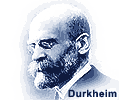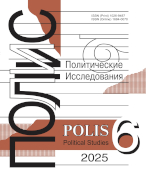The early 20th century russian revolutions:
the lessons for the present
Mironov B.N. The early 20th century russian revolutions: the lessons for the present. – Polis. Political Studies. 2011. No. 5
In the theory of modernization, it is comparative improvement of the conditions of life of the population that is considered the main criterion of modernization success. The author of the article turns the reader’s attention to certain real modernization in Russia in the late 18th to the early 20th centuries, revealed rather recently (by historians). He also exploits analytical data illustrating the rise of the living standards in Russia – the well-being of the population that went on growing cyclically within the period of 120 years from the end of the 18th century up to the First world war. As is proved in the article, the early 20th century Russian revolutions were not called forth by the country’s having entered a general permanent crisis after the Great reforms of the 1860s – they occurred, instead, because the society had not coped by the time with the problems generated by the accelerated modernization.
See also:
Khoros V.G.,
On the causes of the russian revolution. – Polis. Political Studies. 2010. No5
Kulpin E.S.,
The globalizing world and political modernization. – Polis. Political Studies. 2013. No3
Round Table of the «Polis» Journal, Streltsov D.V., Chugrov S.V., Karelova L.B., Oznobishchev S.K.,
Russia and Japan. Part II. View from Russia. – Polis. Political Studies. 2014. No1
Romanov D.M., Meshcherina K.V., Korotayev A.V.,
The Share of Youth in the Total Population as a Factor of Intensity of Non-Violent Protests: A Quantitative Analysis. – Polis. Political Studies. 2021. No3
Glinchikova A.G.,
Democratic modernization and national culture. – Polis. Political Studies. 2010. No6




.jpg)






 print
print
.jpg)
.jpg)